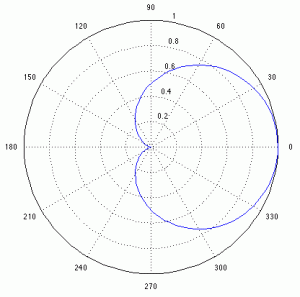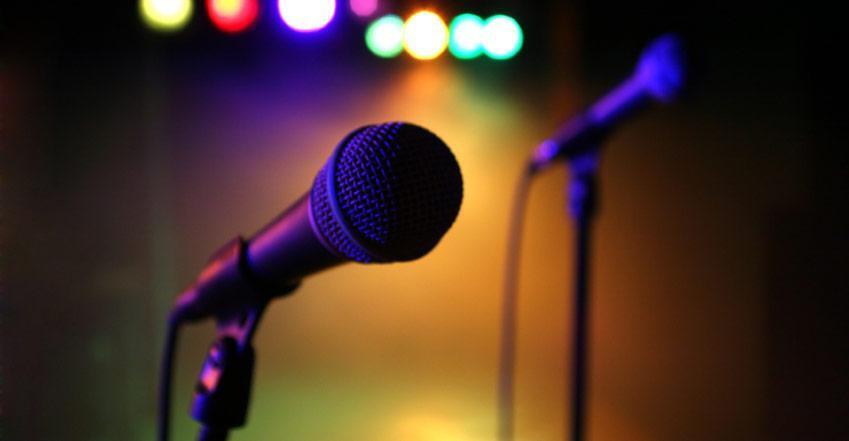How to choose a live sound microphone
A microphone is the first link, and perhaps the most important link, in the audio chain that transmits your voice and music to your audience. With hundreds of models available, it can be a challenge to know which mic is best suited to your live sound needs. This guide will help you sort out the different types of microphones and make an informed choice. Sweetwater’s mic experts can always help you choose. Call (800) 222-4700!
- Types of microphones
- What is impedance?
- Why do polar patterns matter?
- Which microphone is right for me?
- What to look for in a live sound microphone
Types of microphones
 Dynamic Microphone
Dynamic Microphone
The most common type of microphone found in live music settings is the dynamic mic. In most dynamic mics, a very thin, light diaphragm moves in response to changes in sound pressure. The diaphragm’s motion causes a voice coil that is suspended in a magnetic field to move, generating a small electric current. Generally less expensive than condenser mics (although very high quality dynamics can be quite expensive), dynamics feature quite robust construction and can often handle very high Sound Pressure Levels (SPLs). Because of the mechanical nature of their operation, dynamic mics are sometimes less sensitive to attack transients and may not reproduce quite the high-frequency “detail” other types of mics can produce
 Condenser Microphone
Condenser Microphone
Condenser microphones are most often found in recording studios. However, many condenser mics are now being used in live sound environments. The condenser microphone is a very simple mechanical system, simply a thin, stretched conductive diaphragm held close to a metal disk called the back plate. This arrangement creates a capacitor, with the back plate receiving its electric charge from an external power source (phantom power). When sound strikes the diaphragm, it vibrates slightly in response to the waveform. This causes the capacitance to change, which causes the output voltage to vary. This voltage variation is the signal output of the microphone.
What is impedance?
Most sound systems use low-impedance microphones.
In looking at microphone specifications, you will find models described as “low impedance” or “high impedance.” Impedance refers to how much a device resists the flow of an AC signal, such as audio, and it’s measured in ohms. When referring to microphones, low impedance is less than 600 ohms and high impedance is generally greater than 10,000 ohms.
High-impedance microphones can be built very inexpensively. However, their response deteriorates rapidly as cable lengths increase, with 18-20 feet being the limit to avoid seriously compromised signal. Low impedance microphones can transmit signals for hundreds of feet without appreciable changes in their signal. That’s one reason most sound systems are built around low impedance mics.
Why do polar patterns matter?
 Depending on their design and construction, microphones respond to sound coming from different directions with varying degrees of sensitivity. A plot or graph of this response is called a polar pattern. Looking at a mic’s polar pattern will tell you how directional it is, or how well it will reject sound from certain directions. Most mics fall into one of two categories: unidirectional or omnidirectional.
Depending on their design and construction, microphones respond to sound coming from different directions with varying degrees of sensitivity. A plot or graph of this response is called a polar pattern. Looking at a mic’s polar pattern will tell you how directional it is, or how well it will reject sound from certain directions. Most mics fall into one of two categories: unidirectional or omnidirectional.
A unidirectional microphone rejects bleed and helps prevents feedback.
In general, stage microphones should usually be unidirectional, with a Cardioid (or Hypercardioid or Supercardioid) polar pattern. “Cardioid” refers to the heart-shaped graph that represents this pattern. It rejects bleed from other voices and instruments. This helps keep unwanted sound from coming through your mic.
Which microphone is right for me?
When choosing the right mic for your needs, there are a number of factors to consider. You’ll probably be using unidirectional microphones in most applications because they’re so good at isolating sound sources and avoiding feedback. If you’re using stage monitors, you may want the tighter pickup patterns and consequently better gain-before-feedback of Supercardioid mics. The type of instrument you’re miking and the sound you’re going for will tell you whether you need the frequency response of a condenser mic or a dynamic mic.
Vocals – Singing or Speaking
Some top singers use relatively inexpensive dynamic mics such as the iconic Shure SM58, rather than condenser models, because the dynamic mic gives them a warmer, thicker sound and tends to wear better over time. On the other hand, a breathy, delicate voice can benefit from the detailed high end of a condenser mic. You will want to make sure you use a Cardioid or Hypercardioid microphone to keep out unwanted sounds and reduce feedback.
Drums
In many live sound systems, each drum has its own mic. Using a microphone with a tight polar pattern (Cardioid or Hypercardioid) on toms helps isolate the sound of each drum with minimum bleed from the rest of the kit. The snare requires a mic that can handle a very high SPL, so a dynamic mic is usually a good choice. A kick drum needs a good low-frequency mic. The brilliance and high frequencies of cymbals are picked up best by a flat-response condenser mic. Several manufacturers make multi-mic kits for drums, that provide all the mics you need.
Another approach to miking drums live is to have a pair of well-placed condensers as an overhead and a kick drum mic. This minimalist approach is great for situations where channel counts are limited, and it works particularly well on rock-style music where the drummer’s snare and toms tend to be very loud, making close-miking unnecessary.
Guitar Amps
A typical guitar amp has sound characteristics, believe it or not, similar to the human voice. In most instances, a dynamic vocal or drum mic will do fine. Dynamic mics can also typically handle high SPLs, which is another reason that dynamic mics fare well on guitar cabinets.
Bass Amps
Much like a guitar amp, a bass amp produces plenty of volume, and a good large-diaphragm dynamic mic often works well for capturing the wide range of tones a bass can produce without overloading. A good rule of thumb when selecting a mic for a bass cabinet is that if it works well on a kick drum, odds are it will do fine with bass guitar as well. It’s also common to take a direct bass signal from the direct out on an amp, a direct box, or an amp emulator and combine that with the mic’d cabinet sound.
Horns
Directional (Cardioid) dynamic mics with a smooth, flat response and the ability to handle high SPL are good choices for horns.
Acoustic Piano
Two flat-response large- or small-diaphragm condenser microphones are needed for acoustic piano. You might try one positioned 12″ above the treble strings and the other above the lower strings. Also, you might try both mics at about 8″ from the hammers.
Electronic Keyboard
Since most electronic keyboards can be plugged right into an amplifier, you can follow suggestions for electric guitar – essentially a dynamic microphone with high-SPL capability. Of course, you also have the option of running the keyboard’s line-level signals directly into the mixer, so you may choose to skip a microphone altogether.
What to look for in a live sound microphone
How do you choose the right microphones for your situation? When it comes to choosing microphones, there are a number of factors that come into play when deciding which mics are right for you.
What is your application?
First and foremost, what instruments/sound sources are you going to be miking most often? If you’re miking concert grands frequently, good condenser mics are in order. For louder sound sources like guitars, basses, and drums, high-quality dynamic mics are the ticket. The beauty of dynamic mics is that many of them are multi-purpose workhorses that can sound good on a wide variety of sound sources, as long as you take the time to listen and position them correctly. It’s also important when choosing mics to make sure that the mic will successfully handle the volume of the source material without distortion.
What mics do you currently have?
You don’t necessarily need to run out and buy all new mics. See what you have in your current collection and figure out the best way to use them. Dynamic mics, like the SM57, can be used for most instrument needs and even for vocals. Take what you have and add microphones strategically according to your needs.
Does the performer have a preference?
Many performers, especially singers, will have a microphone preference. While many will choose a standard dynamic mic, like the Shure SM58, others will insist on a hand-held condenser mic to capture their vocals.
What is your budget?
Microphones fall into many different price points, and the number and quality of mics is determined largely by your budget. Luckily, many of the staples of the live sound world are relatively inexpensive and very durable, providing great bang for the buck.
Wired or Wireless?
Another choice that needs to be made is whether to use a wired or wireless mic. There’s so much to discuss regarding wireless systems that we’ve created a dedicated Wireless Microphone Buying Guide to cover the topic. You’ll find it here.
We hope you’ve found this buying guide helpful. If you have questions or need more information, give us a call at (800) 222-4700. One of our knowledgeable Sales Engineers will be glad to help you choose the best microphone for your needs and budget.



